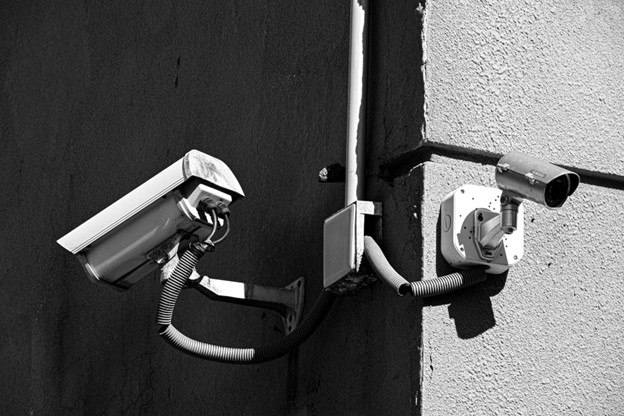
When most people think of movement, they picture walking, stretching, or maybe lifting weights. But beneath every physical action is a complex system of coordination between muscles, joints, nerves, and the brain. Kinesiology is the science that studies these interactions, and it’s rapidly becoming central to how we approach health, high performance, and recovery.
Understanding Kinesiology
Kinesiology is the study of human motion. But it’s far more than just “how we move.” It’s about how that movement influences everything from physical capability to mental resilience.
Drawing from disciplines like anatomy, physiology, neuroscience, and psychology, kinesiology explores how physical activity affects the body and mind. It informs decisions in rehabilitation, sports performance, chronic disease management, and even mental health.
In academic settings, kinesiology departments now span biomechanics, public health, exercise science, and motor control, highlighting just how integrated and dynamic the field has become.
How Kinesiology Supports Long-Term Health
Kinesiology is reshaping how we think about preventative health. Movement, when guided by scientific principles, becomes a tool for healing and resilience.
Managing Chronic Disease with Purposeful Movement
Structured exercise programs designed by kinesiologists play a critical role in managing long-term conditions like heart disease, diabetes, and obesity. In cardiac and pulmonary rehabilitation settings, tailored exercise helps rebuild cardiovascular capacity while protecting against future complications.
Kinesiology also supports cancer survivors. The American College of Sports Medicine’s Moving Through Cancer initiative emphasizes how personalized activity plans improve sleep, reduce fatigue, and even enhance immune function during treatment.
Strengthening Mental Health Through Activity
There’s also a growing body of evidence supporting movement as a therapy for mental health. Regular physical activity, especially when informed by motor learning research, helps reduce anxiety, elevate mood, and support cognitive function in people with neurological disorders.
“When movement is approached with purpose and precision, it becomes medicine for the entire body, mental health included,” says Shae McCutchen. “We’re seeing exercise rival pharmaceutical interventions in certain cases. That’s powerful.”
Kinesiology and Peak Performance: The Science of Moving Smarter
Whether you’re a professional athlete or a weekend runner, kinesiology has something to offer. It helps you understand how your body works under pressure and how to train more intelligently.
Unlocking Efficiency Through Biomechanics
Biomechanics is one of kinesiology’s most useful tools for athletes. It looks at how bones, joints, and muscles interact to produce motion. By analyzing joint angles, muscle forces, and body alignment, athletes can refine their techniques and reduce energy waste.
Take basketball shooting, for example. Biomechanical feedback might help an athlete adjust their elbow angle or foot placement for greater accuracy. In elite gymnastics, even a small shift in the center of gravity can mean the difference between sticking a landing and losing points.
Training with Data
Exercise physiology provides the science behind the grind. By measuring key metrics like VO₂ max, lactate threshold, and recovery time, athletes can push themselves to the edge without falling over it.
Personalized training plans based on these data points lead to better endurance, faster progress, and fewer injuries. Kinesiologists also help manage nutrition and hydration protocols, making sure the body is fully supported for both output and recovery.
“We’ve moved past one-size-fits-all coaching,” explains Shae McCutchen. “Today’s athletes want to know the why behind their training, and kinesiology gives them that clarity.”
Enhancing Mind-Body Connection
Motor control research explores how the brain and body coordinate during complex movements. That means helping athletes improve balance, timing, and reaction speed. In fast-paced sports like tennis or soccer, split-second adjustments make all the difference. Training neural pathways can lead to quicker decisions and more accurate execution under pressure.
A Vital Role in Recovery and Rehabilitation
Injury recovery is where kinesiology arguably has the greatest impact. Its principles help restore not just strength, but function, confidence, and control.
Addressing Kinesiophobia and Chronic Pain
One often-overlooked challenge in injury rehab is kinesiophobia, the fear of movement due to pain or re-injury. It affects between 51% and 72% of people with chronic pain conditions. Avoidant behaviors can prolong disability and make symptoms worse over time.
However, structured interventions grounded in kinesiology have been shown to reduce this fear significantly. Recent randomized clinical trials demonstrate that programs involving guided movement, pain education, and graded exposure help patients rebuild trust in their bodies.
These improvements aren’t just physical. When people feel safe moving again, they also regain independence, motivation, and quality of life.
Restoring Balance, Control, and Strength
Kinesiology also looks at functional asymmetries, postural compensation, and neuromuscular coordination. These are often missed in generalized rehab plans but are critical for sustainable recovery. Through hands-on assessment and motion analysis, kinesiologists help clients reestablish proper movement patterns and avoid falling into the same injury loop.
In practice, this could mean helping a marathoner restore their gait after a knee injury, or supporting a post-op patient as they relearn how to climb stairs with stability and ease.
Where Kinesiology Shows Up in Daily Life
Kinesiology isn’t limited to athletes or those in physical therapy. It benefits people at every stage of life, across countless contexts.
A kinesiologist might:
- Help a child with autism improve motor coordination and body awareness
- Work with an older adult on fall prevention strategies
- Assist an office worker with posture corrections and ergonomic movement routines
- Design activity programs for those living with depression or anxiety
Final Thoughts
Kinesiology blends science with human movement to unlock better health, stronger performance, and faster recovery. From elite athletes to chronic pain patients, everyone benefits when we move with understanding.
What makes kinesiology powerful is its versatility. It’s not about a single tool or technique; it’s a mindset. A way of viewing the body not as a machine to push harder, but as a system to support smarter.
As new research continues to emerge, one thing remains clear: the way we move influences how we feel, how we heal, and how we perform. And kinesiology is helping us move better, on every level.






